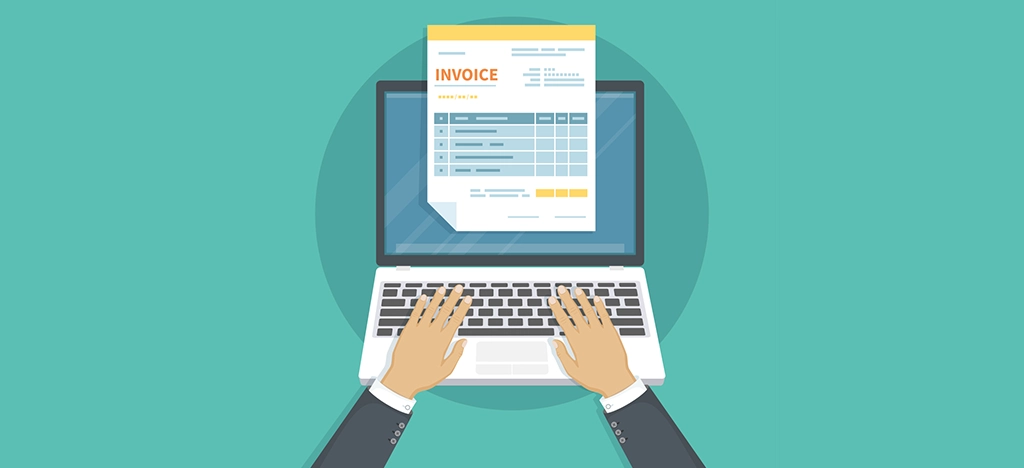EDI billing, or electronic data interchange billing, is a process that allows businesses to exchange invoices and other billing documents electronically. This allows for faster, more efficient billing and payment processing, reducing the need for manual data entry and the potential for errors. Business entities that communicate and carry out business activities, known as transactions, are referred to as trading partners.
EDI billing works by using a standardized format for electronic billing documents, such as the ASC X12 format established by the Accredited Standards Committee X12. This ensures that all parties involved in the billing process can understand and process the information contained in the documents.
The Evolution of EDI
EDI evolved as a replacement for the use of paper in business-to-business communication. Before EDI, the business communication environment was defined by enormous stacks of documents, tons and tons of paper, and countless unclear transactions. EDI emerged as a solution that helped businesses in virtually every industry to secure how they exchange data and to provide a quick turnaround of information.
The origins of EDI go back to the 1960s when Ed Guilbert conceived a crude form of electronic messaging system to manage the US Army's supply chains. Back then, electronic communication was in its infancy in most of the business world apart from large corporations that already used almost 500 different standards. Most electronic exchange standards were not interoperable, had numerous conversion errors, and were generally insecure for business use.
However, EDI eventually emerged on top as it tackled most of the problems other electronic exchange formats faced. It was cheaper, had better interoperability, and had fewer security gaps when the US Army adopted it. Shortly after, the transportation industry became among the first to adopt it as EDI continued to evolve, becoming faster and ensuring smooth data transmission. More importantly, it started to support different forms of business communications, documents, and transactions.
From the mid-1960s to the late 1980s, EDI's popularity grew as it evolved to become a viable solution to long-distance communication in the pre-internet era. It was the ideal replacement for standard communications at the time, such as postal or snail mail, and fax. However, it wasn't until the early 1990s, as the Internet became more common, that it really took off.
How EDI Differs from Other Forms of Communication

- EDI made business-to-business communication easier compared to manual and traditional systems. With electronic data transfer, there were much lower instances of data redundancy, time wastage, and data duplication.
- EDI was faster than snail mail, safer than fax, and more convenient than email. Because businesses could store information in electronic databases, they had less use for paper and the inconveniences that defined them.
- EDI streamlined data-sharing processes between businesses and different branches of the same business. For example, the main office of a large business could share data with all or any branch offices in just a few clicks.
- Electronic data accuracy is one of EDI's top merits. In some cases, the evolution of EDI played a role in improving the overall structure of how companies transacted and communicated locally and internationally.
- EDI is inexpensive and has many other ‘silent' features that businesses find useful. For example, it has many tools and expansion capabilities that make it possible to store and retrieve information on the cloud.
Common Uses of EDI
Many businesses today use EDI for business-to-business communication. There are two reasons this format of communication is most popular today. The first is that businesses can use it to transmit large amounts of information with minimal errors, delays, or security breaches. The other is that it supports different types of trade documents, including:
- Status reports
- Billing
- Quotes and responses
- Purchase orders
- Invoices
- Advance ship notices
EDI is an information exchange between computers and not humans. For this reason, it relies on a special Electronic Data Interchange software that interprets the data and translates it into usable information.
Benefits of EDI
Here are five key benefits that EDI delivers to a business that adopts it for business-to-business communications and transactions.
1. Cost Savings
EDI technology saves time and money in many ways. Since most transactions and communications are automated, a business spends less to achieve the same or even better results faster. Besides, electronic communication saves money that the business would otherwise spend on paper, printing, and moving parcels from one point to another.
2. Business Efficiency
Using EDI billing, businesses can quickly and easily exchange invoices and other billing information, allowing for faster payment processing. This can help improve cash flow and reduce the amount of time and resources spent on manual billing and payment processes.
3. Development of Business Strategies
When a business opts to use EDI, they create opportunities to overhaul its business and expand its reach of entities it can communicate and transact with. Using EDI is not merely automating business processes but redesigning how business is done. EDI releases resources from money, space, and human resources and helps a business boost its responsiveness, language, and business development.
4. Reduces CO2 Emissions
As CO2 emissions become a global problem, it clearly impacts businesses and who and how they transact. Small repetitive tasks primarily exacerbate CO2 emissions. By choosing EDI, a business can reduce its carbon footprint by eliminating paper and printing, which saves trees. EDI also helps improve inventory forecasting, eliminating the wastage of resources used to move inventory back and forth.
5. Increases Security
EDI secures data and the networks that share them using various communication protocols and security standards. These measures ensure that business transactions, documents, and messages are safe from third parties and malicious entities. Electronic billing documents can be encrypted, ensuring that sensitive financial information is protected from unauthorized access.
How Does EDI Billing Work?
EDI allows businesses to exchange billing data and documents with businesses that bill their customers. It allows for faster analysis and processing of billing information, reducing the time and costs needed for data entry and expediting payment approval. Both businesses will also be able to access billing information in their systems in their most convenient formats.

Getting Started with EDI
The first step in getting started with EDI is evaluating your business needs and comparing them with what EDI software offers. The most important considerations when selecting the right software are:
- The volume of EDI transactions your business expects to conduct
- System integration needs
- Required and existing business resources
- Expected nature and level of service and support
Once you understand and evaluate your business's requirements, preferences, and capabilities, it will be easier to decide which EDI solution best fits your and your trading partners' needs. The last step is to find an EDI provider who can take over setting up the system and roll out the EDI services your business needs.
How Do I Set Up An EDI Billing Process?
To set up an EDI billing process, a company will first need to find a reliable EDI service provider. This provider will be responsible for facilitating the electronic exchange of billing documents between the company and its trading partners.
Here are the steps a business follows to implement EDI billing:
Step 1: Enrolling in EDI
A business must enroll as a vendor in EDI to use its billing tools. It will first need to purchase the EDI translation software and hardware and set it up.
Step 2: Add a Value-Added Network provider
Next, the business must set up an electronic mailbox with a third-party Value-Added Network provider. This mailbox is required to use EDI invoices.
Step 3: Set up an electronic payment method
Next, the business must set up an EDI 820 payment method to pay the bills. There are many convenient payment solutions to choose from.
Step 4: EDI mapping
Mapping EDI billing software is essential for translating EDI documents. This process also ensures that the software translates billing data to the right format securely.
Step 5: Transmission of billing files
The EDI software encrypts and transmits billing files to the receiving business using a Managed File transfer (MFT) platform.
Step 6: Testing and validation
In this step, the system carries out a rigorous validation of the billing files. The system can use multiple validation steps depending on the incorporated solutions, each set up in the initial phase of EDI mapping.
Step 7: Integration
Finally, the EDI system completes the billing process using an integrated system. At this point, the recipients receive billing documents, and their systems translate them into their preferred formats.
EDI and Medical Billing Services
Medical billing is often a complex and paperwork-laden process involving many parties. However, with EDI electronic billing services, standardization has significantly simplified the process. Now, billing has fewer manual processes to help ensure procedures, diagnoses, and medical services are properly coded.

A medical billing process begins with an inquiry from the care provider and concludes with a response from the payer. Each inquiry contains identifying information, including the member ID number, date of birth, and payer ID.
A request can go directly to the payer or pass through an intermediary known as a clearinghouse. The clearinghouse is responsible for reformatting a claim and facilitating inquiries to the payer. When the inquiry is forwarded to the payer, they respond to the clearinghouse, who then sends the data to the care provider. The response may be a confirmation or a request to correct errors in the request and resubmit to the clearinghouse.
EDI has found widespread use in businesses in the healthcare industry as it becomes more common to outsource medical billing services. Electronic bill payment service providers act as intermediaries between providers and payers. The transactions that are supported by EDI electronic medical billing services include the following:
- Inquiry of claim status
- Encounters and claim information
- Remittance and payment advice
- Enrollment and disenrollment
- Authorizations and referrals
- Benefits coordination
- Payment of premiums
- Notifying patients of financial obligation
Costs to set up Electronic Data Interchange
The cost of setting up EDI and electronic medical billing services varies depending on the approach. One option is to use an in-house licensing model where the business acquires the hardware and software and installs them on the premises. This solution can cost anything from a few hundred dollars to a few thousand, depending on the level of support.
Another option is the use of a subscription model. This involves subscribing to a trading partner and using a SaaS or cloud-based EDI solution provider. The price of this approach will depend on the level of support and the number of trading partners. Some providers may also charge depending on the volume of transactions.
Overall, EDI billing is a valuable tool for businesses looking to streamline their billing and payment processes. It offers faster, more efficient, and more secure ways of exchanging billing information, helping to improve cash flow and reduce the risk of errors and fraud.
Streamline Your Billing, Payments, and Collections Process with BillFlash
Transform your billing process with BillFlash, an end-to-end solution for getting your practice paid! Schedule a demo today to see how easy and efficient patient billing can be.

